Grow peanuts backyard? Absolutely! Imagine harvesting your own homegrown peanuts, roasted to perfection and enjoyed with friends and family. It’s easier than you think, and this DIY guide will show you exactly how to make it happen. Forget the store-bought variety – there’s nothing quite like the satisfaction of nurturing your own peanut plants from seed to snack.
Peanuts, also known as groundnuts, have a rich history, dating back thousands of years in South America. They weren’t just a food source; they held cultural significance in ancient rituals and were even used as offerings. Today, peanuts are a beloved staple worldwide, and now, you can cultivate them right in your own backyard!
Why should you try this DIY project? Well, for starters, it’s incredibly rewarding to watch something you planted grow and thrive. Plus, growing your own peanuts allows you to control the quality and ensure they’re free from harmful pesticides. In a world where we’re increasingly conscious of where our food comes from, this is a fantastic way to connect with nature and enjoy fresh, healthy snacks. So, let’s dive in and discover the secrets to successfully grow peanuts backyard, transforming your garden into a peanut paradise!
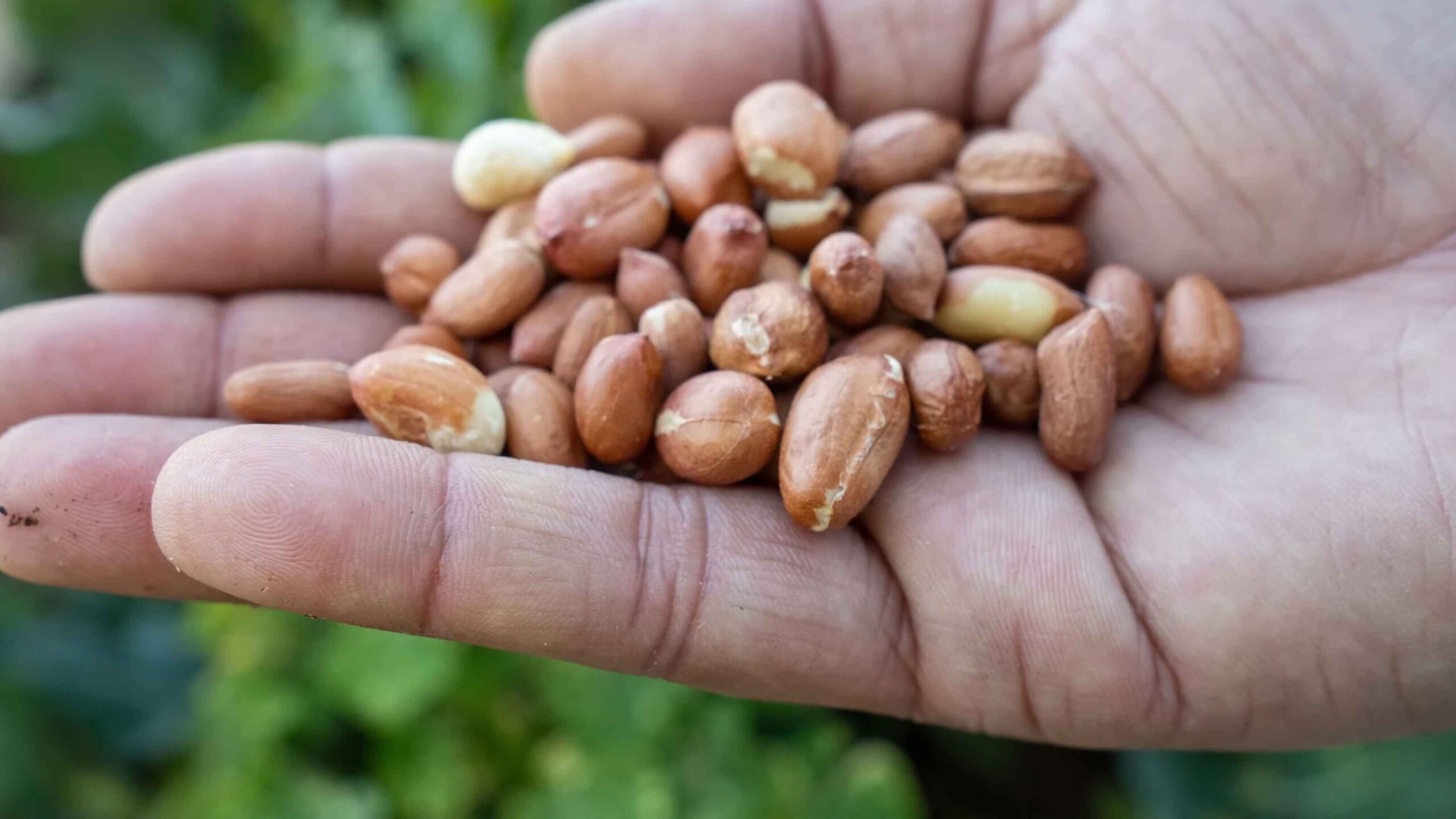
Growing Peanuts in Your Backyard: A Beginner’s Guide
Hey there, fellow gardening enthusiasts! Ever thought about growing your own peanuts? It’s surprisingly easy and incredibly rewarding. Imagine the satisfaction of harvesting your own homegrown peanuts, roasting them up, and enjoying a delicious, healthy snack. I’m here to guide you through the entire process, from planting to harvesting, so you can experience the joy of growing your own peanuts right in your backyard.
What You’ll Need
Before we dive in, let’s gather the necessary supplies. Here’s a checklist to make sure you’re prepared:
* Peanut Seeds: Choose a variety suited to your climate. Virginia, Spanish, and Runner are popular choices. You can find these at your local garden center or online. Make sure they are raw, unsalted peanuts. Roasted peanuts won’t sprout!
* Well-Draining Soil: Peanuts thrive in loose, sandy loam soil. If your soil is heavy clay, you’ll need to amend it with organic matter.
* Sunshine: Peanuts need at least 6-8 hours of direct sunlight per day.
* Water: Consistent moisture is crucial, especially during flowering and pod development.
* Garden Fork or Tiller: For preparing the soil.
* Shovel or Trowel: For planting the seeds.
* Optional: Compost, fertilizer (specifically formulated for legumes), mulch.
Preparing the Soil
The key to successful peanut growing is well-prepared soil. Peanuts need loose soil to allow the “pegs” (the stems that develop into peanut pods) to easily penetrate the ground.
1. Clear the Area: Remove any weeds, rocks, or debris from the planting area. This will give your peanuts a clean slate to grow.
2. Loosen the Soil: Use a garden fork or tiller to loosen the soil to a depth of at least 12 inches. This is really important for good root development.
3. Amend the Soil: If your soil is heavy clay or compacted, amend it with plenty of organic matter, such as compost or well-rotted manure. This will improve drainage and aeration. I usually add a generous layer of compost and work it in thoroughly.
4. Check the pH: Peanuts prefer a slightly acidic soil pH of around 6.0 to 6.5. You can test your soil pH with a soil testing kit and amend it accordingly.
5. Level the Soil: Rake the soil to create a smooth, even surface.
Planting the Peanut Seeds
Now for the fun part – planting! Timing is crucial for peanut success. You want to plant after the last frost when the soil temperature has warmed to at least 65°F (18°C).
1. Soak the Seeds (Optional): Soaking the peanut seeds in water for a few hours before planting can help speed up germination. I usually soak mine overnight.
2. Planting Depth: Plant the peanut seeds about 1-2 inches deep and 6-8 inches apart. Space rows about 2-3 feet apart. This gives the plants plenty of room to spread out.
3. Cover the Seeds: Gently cover the seeds with soil and pat it down lightly.
4. Water Thoroughly: Water the planting area thoroughly to ensure good seed-to-soil contact.
Caring for Your Peanut Plants
Once your peanut plants are in the ground, it’s important to provide them with the care they need to thrive.
1. Watering: Water regularly, especially during dry periods. Peanuts need consistent moisture, but avoid overwatering, which can lead to fungal diseases. I usually water deeply once or twice a week, depending on the weather.
2. Weeding: Keep the planting area free of weeds, which can compete with your peanut plants for nutrients and water. Hand-pull weeds carefully to avoid disturbing the peanut plants’ roots.
3. Fertilizing: Peanuts are legumes, which means they can fix nitrogen from the air. However, they can still benefit from a fertilizer specifically formulated for legumes. Apply fertilizer according to the package directions. I usually use a low-nitrogen fertilizer.
4. Hilling: About a month after the plants flower, you’ll notice small “pegs” forming at the base of the plant. These pegs are the stems that will develop into peanut pods. To encourage pegging, gently hill the soil around the base of the plants. This provides a loose, dark environment for the pegs to penetrate the soil.
5. Pest and Disease Control: Keep an eye out for pests and diseases. Common peanut pests include aphids, spider mites, and leafhoppers. Common diseases include leaf spot and white mold. Treat any infestations or diseases promptly with appropriate organic or chemical controls. I prefer to use organic methods whenever possible.
Flowering and Pegging
This is where the magic happens! After about a month or two, your peanut plants will start to flower. The flowers are small and yellow, and they self-pollinate. After pollination, the flowers will wither, and the “pegs” will start to form. These pegs grow downwards into the soil and develop into peanut pods.
Understanding Pegging
Pegging is a crucial stage in peanut development. The pegs need to penetrate the soil to form the peanut pods. This is why it’s so important to have loose, well-draining soil. If the soil is too compacted, the pegs won’t be able to penetrate, and you won’t get any peanuts.
Harvesting Your Peanuts
Harvesting time is the most exciting part! You’ll know your peanuts are ready to harvest when the leaves start to turn yellow and the plants begin to wilt. This usually happens about 120-150 days after planting.
1. Dig Up the Plants: Use a garden fork or shovel to carefully dig up the entire plant. Be gentle to avoid damaging the peanut pods.
2. Shake Off the Soil: Shake off as much soil as possible from the plants.
3. Cure the Peanuts: The next step is to cure the peanuts. This involves drying them to reduce their moisture content and prevent spoilage. There are two main methods for curing peanuts:
* Air Drying: Hang the plants upside down in a well-ventilated area for several weeks. This allows the peanuts to dry slowly and evenly.
* Oven Drying: Spread the peanuts in a single layer on a baking sheet and dry them in a low oven (around 100°F or 38°C) for several hours. This is a faster method, but it’s important to monitor the peanuts closely to prevent them from burning.
4. Shell the Peanuts: Once the peanuts are cured, you can shell them. This involves removing the peanuts from their pods. You can do this by hand or with a peanut sheller.
5. Store the Peanuts: Store the shelled peanuts in an airtight container in a cool, dry place. They should last for several months.
Roasting Your Homegrown Peanuts
Now for the best part – roasting your homegrown peanuts! Roasting brings out the nutty flavor and makes them even more delicious.
1. Preheat the Oven: Preheat your oven to 350°F (175°C).
2. Spread the Peanuts: Spread the shelled peanuts in a single layer on a baking sheet.
3. Roast the Peanuts: Roast the peanuts for 15-20 minutes, or until they are golden brown and fragrant. Stir them occasionally to ensure even roasting.
4. Cool the Peanuts: Remove the peanuts from the oven and let them cool completely.
5. Enjoy! Enjoy your freshly roasted homegrown peanuts! You can eat them plain, add them to trail mix, or use them in your favorite recipes.
Troubleshooting
Even with the best planning, you might encounter some challenges along the way. Here are a few common problems and how to address them:
* Poor Germination: If your peanut seeds aren’t germinating, make sure the soil temperature is warm enough and that the seeds are getting enough moisture. Also, check the expiration date on the seed packet.
* Yellowing Leaves: Yellowing leaves can be a sign of nutrient deficiency. Try fertilizing with a legume-specific fertilizer.
* Pest Infestations: If you notice pests on your peanut plants, treat them promptly with appropriate organic or chemical controls.
* Disease Problems: If you see signs of disease, such as leaf spots or white mold, treat the plants with a fungicide.
Final Thoughts
Growing peanuts in your backyard is a fun and rewarding experience. With a little planning and care, you can enjoy a bountiful harvest of homegrown peanuts. So, get out there and give it a try! I promise you won’t regret it. Happy gardening!
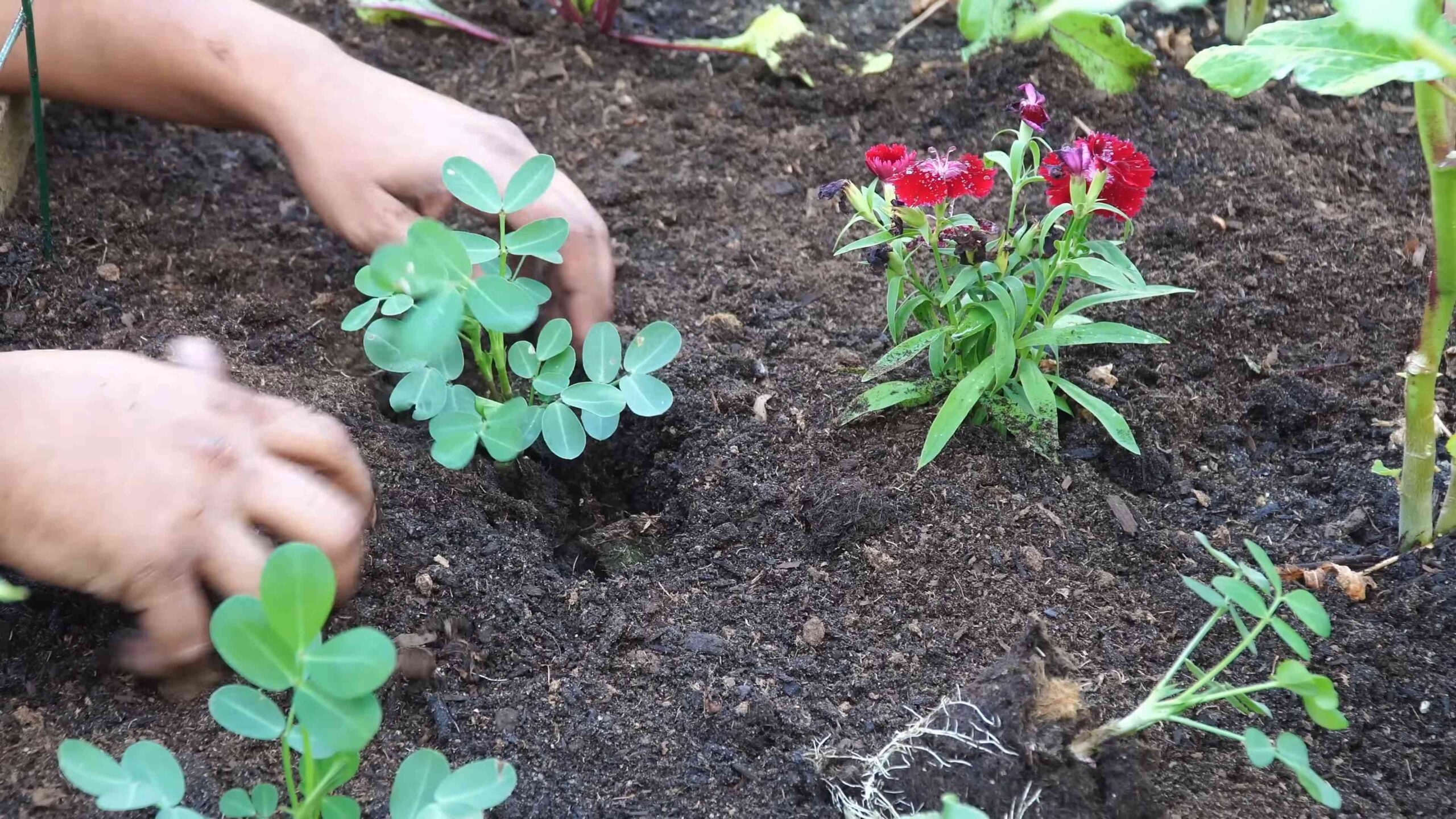
Conclusion
So, there you have it! Growing peanuts in your backyard is not only achievable but also a deeply rewarding experience. Forget the store-bought, often bland, and sometimes questionably sourced peanuts. Imagine the satisfaction of harvesting your own crop, knowing exactly where they came from and how they were grown. This DIY trick transforms your garden into a source of fresh, flavorful, and sustainable snacks.
Why is this a must-try? Because it’s more than just growing food; it’s about connecting with nature, understanding the growing process, and enjoying the fruits (or rather, the legumes!) of your labor. It’s a fantastic project for families, teaching children about where their food comes from and fostering a love for gardening. Plus, freshly harvested peanuts have a taste that’s simply unmatched by anything you can buy in a store. They are sweeter, nuttier, and bursting with natural flavor.
But the fun doesn’t stop there! Feel free to experiment with different varieties of peanuts. Virginia peanuts are known for their large size and are great for roasting. Spanish peanuts are smaller and have a reddish skin, perfect for peanut butter. Runner peanuts are commonly used in commercial peanut butter production. Try growing a mix of varieties to discover your personal favorite.
Consider companion planting to enhance your peanut crop. Marigolds can help deter nematodes, while herbs like basil and rosemary can attract beneficial insects. You can also improve soil drainage by adding organic matter like compost or well-rotted manure.
And don’t be afraid to get creative with your harvest! Roast them with different spices like chili powder, garlic powder, or smoked paprika for a flavorful snack. Use them to make your own homemade peanut butter, adding honey, cinnamon, or even a touch of chocolate for a unique twist. Incorporate them into your favorite Asian-inspired dishes for added crunch and flavor. The possibilities are endless!
We wholeheartedly encourage you to try growing peanuts in your backyard. It’s a relatively low-maintenance project that yields a surprisingly abundant harvest. It’s a fantastic way to enjoy fresh, healthy snacks, connect with nature, and learn new skills.
Once you’ve tried it, we’d love to hear about your experience! Share your tips, tricks, and photos in the comments below. Let’s build a community of backyard peanut growers and learn from each other. What variety did you grow? What challenges did you face? What were your favorite ways to enjoy your harvest? Your insights can help others succeed in their own peanut-growing adventures. So, get your hands dirty, plant some seeds, and get ready to enjoy the delicious rewards of growing peanuts in your backyard!
Frequently Asked Questions (FAQ)
What is the best time to plant peanuts?
Peanuts require a long, warm growing season, typically 120-150 days. The best time to plant peanuts is after the last frost, when the soil temperature has reached at least 65°F (18°C). In most regions, this is typically in late spring or early summer. Check your local weather forecast and planting guides for specific recommendations for your area. Planting too early can result in poor germination and stunted growth.
What kind of soil is best for growing peanuts?
Peanuts thrive in well-drained, sandy loam soil. This type of soil allows the developing peanut pods to easily penetrate the ground. Avoid heavy clay soils, as they can become compacted and restrict pod development. The ideal soil pH for peanuts is between 6.0 and 6.5. Before planting, consider amending your soil with compost or other organic matter to improve drainage and fertility. A soil test can help you determine the pH and nutrient levels of your soil and identify any necessary amendments.
How much sunlight do peanuts need?
Peanuts require at least 6-8 hours of direct sunlight per day to thrive. Choose a planting location that receives ample sunlight throughout the growing season. Insufficient sunlight can lead to weak, leggy plants and reduced yields. If you live in a particularly hot climate, some afternoon shade may be beneficial to prevent the plants from overheating.
How often should I water my peanut plants?
Peanuts need consistent moisture, especially during flowering and pod development. Water deeply and regularly, aiming to keep the soil consistently moist but not waterlogged. Avoid overhead watering, as this can promote fungal diseases. A soaker hose or drip irrigation system is ideal for delivering water directly to the roots. During periods of drought, you may need to water more frequently.
How do I know when my peanuts are ready to harvest?
Determining the right time to harvest peanuts is crucial for optimal flavor and yield. The best indicator is the maturity of the pods. About 120-150 days after planting, dig up a few plants and check the pods. The inside of the shells should be dark and the kernels should be plump and well-formed. If the kernels are still small and the shells are light-colored, they are not ready. Another sign is yellowing of the foliage. Harvest when about 60-70% of the pods are mature.
What are some common pests and diseases that affect peanuts?
Peanuts can be susceptible to various pests and diseases, including nematodes, aphids, spider mites, leaf spot, and white mold. Regularly inspect your plants for signs of infestation or disease. Use organic pest control methods, such as insecticidal soap or neem oil, to control pests. Ensure good air circulation and avoid overhead watering to prevent fungal diseases. Crop rotation can also help reduce the risk of soilborne diseases.
Can I grow peanuts in containers?
Yes, you can grow peanuts in containers, but you’ll need a large container (at least 18 inches in diameter and 12 inches deep) with good drainage. Use a well-draining potting mix and provide plenty of sunlight and water. Container-grown peanuts may require more frequent watering and fertilization than those grown in the ground. Choose a compact peanut variety for best results.
How do I cure and store my harvested peanuts?
After harvesting, shake off any excess soil and allow the peanuts to dry in a well-ventilated area for several weeks. You can hang the entire plant upside down or spread the peanuts out on a screen or tarp. Once the peanuts are completely dry, store them in a cool, dry place in airtight containers. Properly cured and stored peanuts can last for several months. You can also roast them for longer storage.
Can I save seeds from my peanut harvest to plant next year?
Yes, you can save seeds from your peanut harvest, but keep in mind that the resulting plants may not be exactly the same as the parent plant, especially if you grew a hybrid variety. Select healthy, mature peanuts from your harvest and store them in a cool, dry place until planting time. Before planting, crack open the shells and remove the kernels.
What are some creative ways to use my homegrown peanuts?
Beyond roasting and making peanut butter, there are many creative ways to use your homegrown peanuts. Add them to salads, stir-fries, and noodle dishes for added crunch and flavor. Use them to make peanut brittle, peanut cookies, or peanut sauce. Grind them into peanut flour for baking. You can even use them to make homemade peanut oil. The possibilities are endless!


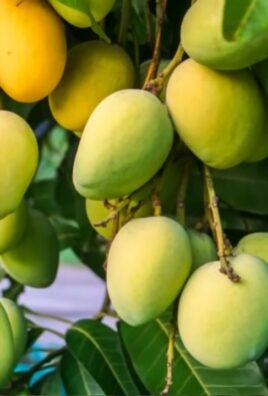
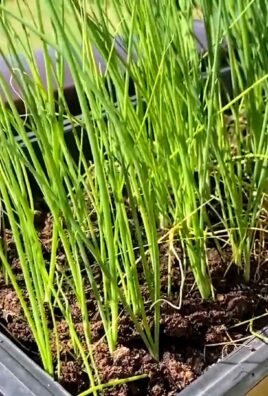
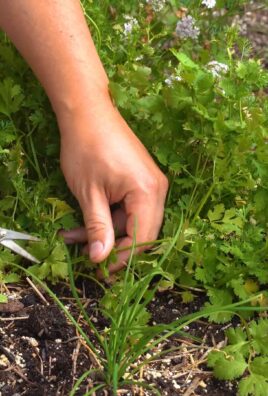
Leave a Comment